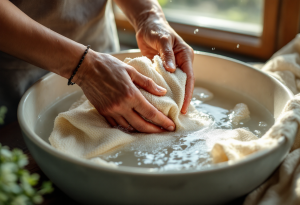The fashion industry, darling, it’s a beast. A beautiful, glittering, occasionally monstrous beast that chews up resources and spits out trends faster than you can say “haute couture.” But, like any beast, it can be tamed. The answer? Slow fashion. And yes, I know what you’re thinking: “Another trend?” No, my dears, this isn’t a fleeting fancy. It’s a fundamental shift, a return to sanity, and frankly, the only way forward, especially when it comes to women’s apparel. It’s about investing in pieces that last, both in terms of quality and style.
The Problem with Fast Fashion
Let’s be honest, shall we? That £15 dress you snagged online? It probably won’t last past a handful of wears. And where does it end up? Landfill. Mountains of discarded clothing, choking the planet. Fast fashion encourages a culture of disposability, a constant craving for the new, the next, the now. It’s exhausting, both for your wallet and the environment. [img = A landfill overflowing with discarded clothing, highlighting the environmental impact of fast fashion.] The relentless pursuit of trends leaves us feeling empty, constantly chasing an unattainable ideal. And the human cost? Don’t even get me started on the sweatshops and unethical labor practices. Its all very sad, really.
The Principles of Slow Fashion
So, what *is* slow fashion? It’s a conscious approach to buying and wearing clothes. It’s about quality over quantity, timelessness over trends, ethical production over cheap labor. It’s about knowing where your clothes come from and the impact they have. Its about cherishing the garment and its journey. It’s about investing in fewer, better things.
Think of it as curating a wardrobe rather than just accumulating clothes. A collection of pieces that you truly love, that reflect your personal style, and that you’ll wear for years to come.
Building a Sustainable Wardrobe
How does one even begin to embrace slow fashion? Well, first, take stock of what you already own. Before you even *think* about buying something new, assess your current wardrobe. What do you wear constantly? What sits untouched, gathering dust? Be honest with yourself. [img = A curated closet with high-quality, timeless pieces, showcasing the concept of a sustainable wardrobe.] Second, invest in quality. Seek out well-made pieces from brands that prioritize ethical and sustainable practices. Look for natural fibers, durable construction, and timeless designs. Vintage shops are also a treasure trove of unique and high-quality finds. When buying new, ask questions. Where was this made? What materials were used? Who made it? A little research goes a long way.
The Future is Circular
We are living in 2025, you see, and circularity is key. Consider clothing swaps with friends, renting special occasion outfits, and donating or reselling items you no longer wear. The idea is to keep clothes in circulation for as long as possible, reducing waste and minimizing environmental impact. I’ve even started making my own bespoke linings from upcycled garments sent in by customers – a truly personal touch! It’s all about extending the life cycle of your clothes, giving them a second, third, or even fourth act.
Let’s face it, trends come and go, but style is eternal. [img = A woman confidently wearing a classic, well-tailored coat, embodying timeless style and slow fashion principles.] Slow fashion isn’t just a trend; it’s a mindset. It’s a way of thinking about clothes that is kinder to the planet, fairer to the people who make them, and ultimately, more fulfilling for us. It’s about creating a wardrobe that tells a story, not just a collection of disposable items. And darling, isn’t that so much more chic?


